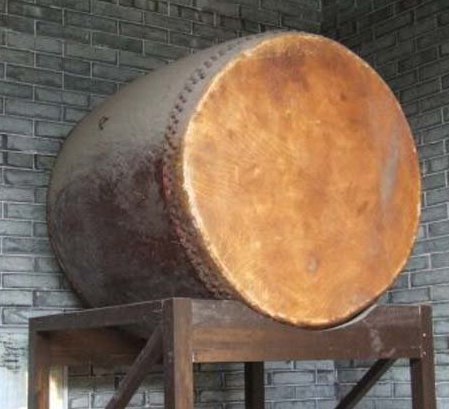The history of war drums
1526 views · Organized by 赵锦辛 on 2022-03-09
It has a long history. As early as the era of Genghis Khan (1162-1227), war drums have been widely used in the court and military. "The Secret History of Mongolia" contains: "Suwei is in charge of flags, drums, and weapons." The newly translated and simplified annotation "Secret History of Mongolia" also contains: "I will sacrifice to my hope, beat my black cowhide veil, and sound the drum of winter and winter!" The Italian traveler Marco Polo (1254-1324) in In "The Travels of Marco Polo", when describing the life of the Mongolian army at that time, he wrote: "Before going to war, they must wait for the leader's drums. After the drums sound, most of the people will play their drums. Musical instruments and singing." This kind of big drum is a war drum used by the ancient Mongolian army in war.
Since the Ming Dynasty, the war drum has changed from the old system to an oblate shape. The drum frame is mostly made of wood, such as chun, se, birch, mulberry, and poplar. Both sides are covered with cowhide. The leather edge is fixed with a single row of drum nails. There are two drum rings on both sides of the drum frame. The war drums have different specifications and sizes. The diameter of the drum surface is 52 cm to 100 cm, and the height of the drum frame is 20 cm to 34 cm. The pronunciation is lower than that of the drum, but it is very loud. Mainly used in folk instrumental ensembles, dances, lantern festivals, acrobatics and gongs and drums. However, in the case of solemn and solemn scenes, the long drum is still used. The performers are highly skilled and can dance while striking.

Since the Ming Dynasty, the war drum has changed from the old system to an oblate shape. The drum frame is mostly made of wood, such as chun, se, birch, mulberry, and poplar. Both sides are covered with cowhide. The leather edge is fixed with a single row of drum nails. There are two drum rings on both sides of the drum frame. The war drums have different specifications and sizes. The diameter of the drum surface is 52 cm to 100 cm, and the height of the drum frame is 20 cm to 34 cm. The pronunciation is lower than that of the drum, but it is very loud. Mainly used in folk instrumental ensembles, dances, lantern festivals, acrobatics and gongs and drums. However, in the case of solemn and solemn scenes, the long drum is still used. The performers are highly skilled and can dance while striking.
Involving musical instruments
War drums (pinyin: Zhàngǔ) are of different sizes, and are divided by the diameter of the drum surface. There are five sizes of 27, 33, 40, 46 and 54 cm, and their drum bodies are 17, 20, 24, 30 and 34 cm high respectively. The material used for making war drums is the same as that of Tanggu, but the drum body can also be made of basswood, with 2-4 drum rings in the middle. Play with a wooden hob. War drums were used on the battlefield in ancient times to send orders and boost morale. In modern times, they are mainly used in folk instrumental ensembles, dances, lantern festivals, acrobatics and gongs and drums.
 渝公网安备 50010702504639号
渝公网安备 50010702504639号